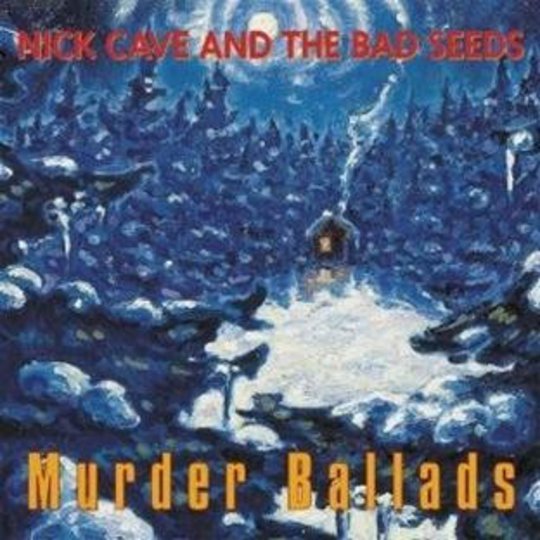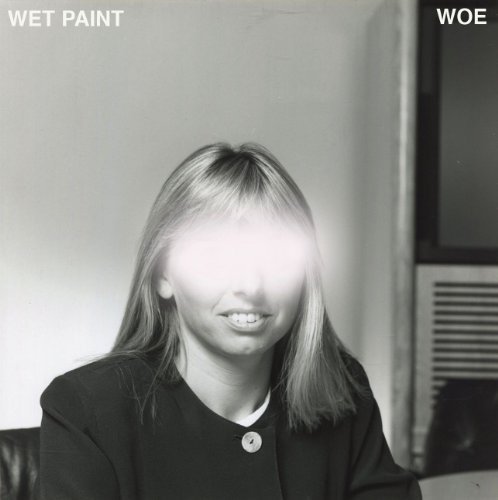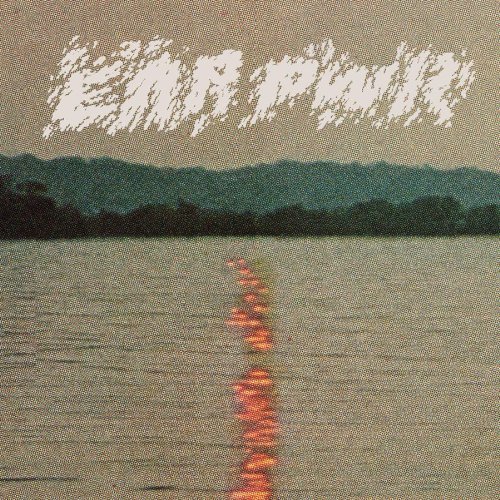The initial urge is to be canonical. To state that Let Love In is the last mid-period Bad Seeds record, post-Barry and pre-Warren (although Warren was, in fact, a session musician on a couple tracks). A time when Nick’s songs still ‘just got thrown to the group’ (Mick) as sketches of reckless excess, the lyrical ‘tyranny and terror’ still visceral enough to be genuinely frightening, the ‘love and devotion’ too telescopically metaphorical to feel as naked as it would later. And that No More Shall We Part is the first late-period album, as much a duet between Nick’s piano and Warren’s violin as the Jesse James and The Road soundtracks that would appear the other end of the decade, and defined by a married, sober, even-voiced Cave really orchestrating proceedings for the first time – Warren and Mick’s string arrangements, for example, and the McGarrigle Sisters’ backing vocals.
With the two records in between representing the two funerals… trials the Bad Seeds had to weather in order to get from one place to the other. The first: seeing their established approach to music-making burn itself out in a final free-for-all (‘open season,’ as Mick puts it) of melodramatic spontaneity. The second: hearing their leader emerge from the rubble and write one of the most romantic, gently devastating records of all time, essentially on his own.
A happening far too important, in other words, to regard as a bridge between two other records. And then there’s the fact Mick considers Murder Ballads to be the ‘end point for that period of the Bad Seeds’ (during which, he later explains, he feels he exerted real ‘influence’ over the recording process) rather than Let Love In. Not to mention Amy Hanson’s opinion – expressed in excellent (if a little gushing) essays which have been inserted into these magnificent reissues’ sleevenotes – that Let Love In was ‘the beginning of a new period for the Bad Seeds rather than an end.’ And what about the question of what one should call the clean break that was Dig!!! Lazarus, Dig!!! if No More Shall We Part counts as a late-period Bad Seeds record? PostModern-period Bad Seeds? PostGrinderman-period Bad Seeds? No, such broad critical brushstrokes are a waste of time, it turns out.
So next, I tried to think about the records in pairs – in terms of what links each album, directly, to the one before and the one after. And it’s in making sense of this question that these ‘Collectors Editions’ really come into their own, their b-sides and rarities, accompanying spiels and beautifully edited mini-documentaries genuinely contributing to an understanding of how one thing led to another. Iain Forsyth’s and Jane Pollard’s ‘Do You Love Me Like I Love You’ talking-head collages are as insightful in this respect as they are infuriating for their tolerance of the worst kind of critical cliché. The trade-off is thus: for every glorious one-liner from scoundrels like Bleddyn Butcher and Sebastian Horsley, there’s a whole bunch of nonsense from wankers like Fred Blood-Royale (remember him?) and some Garth Marenghi-esque academic called John Baker (who insists on calling Nick Cave ‘Cave’ in order to show the world what a massive academic he is) about how ‘darkly humorous’ and ‘kind of ironic’ and ‘ambiguous’ and ‘cinematic’ and ‘gothic’ and so on these songs are.
So anyway, we quickly discover that Let Love In was very much a direct response to the overproduced ‘disaster’ that was Henry’s Dream, not only in terms of the way Tony Cohen, ‘the unproducer’ (Blixa) was brought in to leave the sound alone, but also in the sense that the band ‘made sure we had better basic tracks, rather than being lazy and saying “that’s good enough”’ (Mick). Proof of this process comes via an early version of ‘Red Right Hand’ slipped in amongst the Let Love In rarities, ‘Where The Action Is’, a slice of mannered lounge-blues that wasn’t good enough, and therefore got moulded and manipulated into the Bad Seeds’ most iconic song.
And potentially even more interesting is the fact that Murder Ballads’ two strongest tracks, ‘Song Of Joy’ and ‘O’Malley’s Bar’, were products of the Let Love In sessions, ‘leftovers’ as someone puts it on one of the films. Interesting and satisfying: I’ve spent whole evenings arguing with people all too willing to overstate the significance of the Ballads.
And did you know that Nick started working on The Boatman’s Call songs during the Murder Ballads ruckus, taking Martyn Casey and Thomas Wylder into an adjoining studio and quietly tearing himself into beautiful pieces – rather, that is, than the people of Millhaven and O’Malley’s Bar? It’s a process that would repeat itself ten years later, albeit for completely different reasons, with the founding of Grinderman. That Martyn was at the heart of both projects is a testament to his status as arguably, by the early Nineties anyway, the most indispensable Bad Seed. It is fitting, then, that the most immediately striking feature of the new 5.1 mixes is the prominence of his bass, not only in the Red Right Hands and Stagger Lees that he’s become notorious for, but also as a melodic counterpoint to some of Nick’s most delicate writing, on everything from ‘Into My Arms’ to ‘People Ain’t No Good’. ‘I love playing bass,’ he murmurs at one point during the Let Love In documentary. ‘Suzi Quatro said guitars are for the head, drums are for the feet and bass is right between the legs.’ Indeed.
It is the additional tracks on The Boatman’s Call that really make sense of its relationship with its predecessor, though, several feeling like a bridge between the two records in a way that none of the released tracks do, marrying the repetitively stanzaic structures and Bad Seed interventions of Ballads with a new willingness to talk about real things. ‘Little Empty Boat’ is the pick of the 18 sort-of-new tracks we get in total here, reminding me musically and lyrically of the strongest work on Abattoir Blues – ‘I am the resurrection babe, and you’re standing on my foot.’ The weakest accompany No More Shall We Part. Probably because of the four years of silence that followed The Boatman’s Call, they feel like the products of Nick teaching himself how to write again, ‘Good Good Day’ distressingly conventional and ‘Grief Came Riding’ literally admitting "I’m sitting here and thinking aloud." John Hillcoat talks very movingly about this period in the No More Shall We Part film, describing his efforts to convince Nick that his creativity wasn’t as tied up with narcotics as he’d apparently become convinced it was.
Before last week, I’d not paid much attention to the two records preceding the Abattoir Blues double-album, long regarding them as formative stepping stones. But No More Shall We Part was a (yes, somewhat overlong) revelation for me this time around, not least because of the final one of these direct links that I’m going to mention here. Namely, Warren Ellis, whose ‘unique relationship with intonation’ (Nick) takes on an increasingly dramatic role at roughly the halfway point of The Boatman’s Call, and (I like to imagine) was swelling and swelling during that four-year gap to the point that, by the first half of No More Shall We Part, it is indispensable. ‘Hallelujah’ and ‘Oh My Lord’ would be half-songs without it, nothing songs, Warren’s extraordinarily atmospheric phrasing doing the work of four Let Love In-era Bad Seeds. As the violinist Davide Rossi puts it, Warren had become Nick’s ‘foil’ by this point: ‘Ellis’ violin is always on the edge – like Nick’s voice.’
Context isn’t all this lovingly assembled material is good for, however. There is enormous pleasure to be had in listening to Blixa Bargeld go on about some ‘Minister of Interior’ who ‘died of an amyl-nitrate filled orange being in his mouth and he had a plastic bag over his head and he suffocated in the process of self-inflicted masturbational excess’ in order to ‘explain’ something entirely unrelated to what everybody else is talking about. And then see John Hillcoat talk affectionately about the real problems he had hypnotising Blixa for one video (Blixa eventually hypnotised himself) and teaching him to line-dance for another. And then watch all the Bad Seeds enthusiastically grooving, like sleazy dads in tank-tops and sunglasses, throughout a solid 80 percent of their videos. It’s remarkable, incidentally, that anybody who sat through a Nineties Bad Seeds video thought of the band as anything other than hilarious, however creepy the songs. At least everybody finally got the joke once ‘Fifteen Feet Of Pure White Snow’ was released, thrusting a gurning Jason Donovan into a show-stealing role that should really have defined his subsequent career.
Video: Nick Cave & The Bad Seeds 'Fifteen Feet of Pure White Snow'
To truly understand a Bad Seeds record, though, is to stop thinking and let it scream in your ear, breathe hot breath on your neck, weep into your hair and teach you about god and the devil. Strip away the trappings and you’re left with two of the most affecting albums ever recorded, and two merely excellent ones. And this time they’re coming at you in surround sound.
Unsurprisingly, the 5.1 is most effective on Let Love In, turning the bells, rustling maracas, ever-present Hammond and stomps of Conway Savage’s piano into a landscape of noises for Nick’s all-over-the-place vocal to hide behind and jump out from. For me, this record is about chaotic balance (bookended by ‘Do You Love Me?’ parts one and two, with a ballad and a riot on either side of ‘Red Right Hand’). It is about the loudest fight to the death between melody and noise the Bad Seeds ever recorded (the underlying instrumental harmony in the second verse of ‘Jangling Jack’ sounds like some kind of infernal choral descant). And it is about Nick’s most potent (in every respect except the personal) songwriting. As far as I’m concerned, ‘Lay Me Low’ is up there with ‘Tupelo’ and ‘The Mercy Seat’. (10)
By splitting up soundscape, surround sound also injects a new significance into the more important songs on Murder Ballads – highlights which are the more important songs, indeed (clue: they’re not the ones with all the curse-words in). Wedged in as they are between Nick’s funniest lyrics ("I’ve got a pretty little mouth underneath all the foaming" etc.) it’s easy to forget that ‘Lovely Creature’ and ‘Crow Jane’ are full of uniquely strange textures, ‘Song of Joy’ a uniquely brutal directness, ‘Henry Lee’ some of Nick’s finest harmonies. For me, Murder Ballads has always been about precisely the cohesiveness it is so often accused of not having, a marriage of the horrible, the atmospheric, the gorgeous and the genuinely funny via revisited tropes (the "La la la la / La la la lie" refrain, for example) and musical-theatrical singalongs. I don’t so much engage as admire. (8)
The Boatman’s Call, on the other hand, is about the once-in-a-generation sense that a musician has found the perfect shapes for expressing the most important things anybody will ever know. That Nick Cave did so by forgetting everything he’d previously done, which was also brilliant, is just fucking insane. The eloquent simplicity of the interaction between man, god and church in ‘Brompton Oratory’, the way ‘Are You The One That I’ve Been Waiting For?’ circles round its initial melody again and again before resolving itself into a one-line chorus, and the sheer intensity of the writing in ‘Black Hair’ represent unambiguous proof that Nick Cave writes the best love songs anyone’s ever heard. (10)
And what of No More Shall We Part? Perhaps this: with a track like ‘Oh My Lord’, Nick wrote about more stuff than most songwriters fit onto an entire record. About family, about religion, about art, about conversation, about relationships, about paranoia, about anger, about isolation, but also about marshmallows and having his hair cut and "A guy wearing plastic antlers / Pressing his bum against the glass." Like the book Mephistopheles (a figure I don’t believe Nick has written about, which is a bit surprising actually) offers to a doubting Faustus, these four records contain everything in the world. (8)
And as Faustus soon discovers, the world’s a much bigger, richer, sexier, louder, darker, scarier place when one has the opportunity to know everything. So take it.























